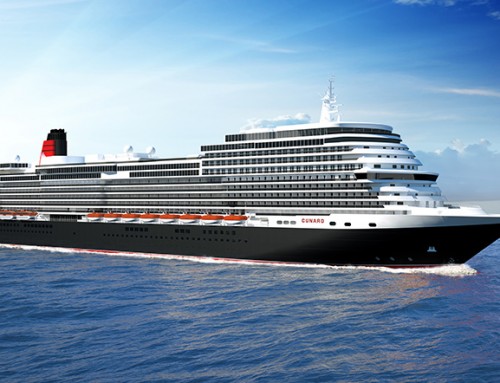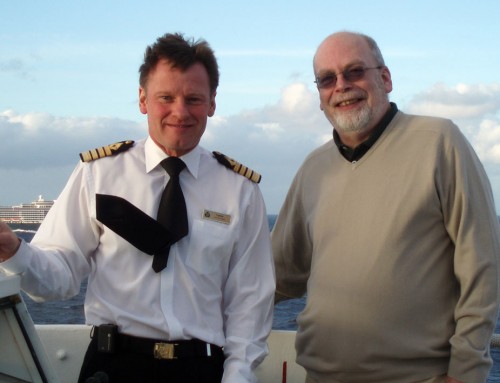 In little over a month, Celebrity Eclipse, the third of a planned five Solstice-class cruise ships, will arrive in Southampton for a spectacular naming ceremony, and to start a summer of voyages departing from the UK.
In little over a month, Celebrity Eclipse, the third of a planned five Solstice-class cruise ships, will arrive in Southampton for a spectacular naming ceremony, and to start a summer of voyages departing from the UK.
This weekend, the nearly-completed vessel was floated out of the giant construction shed at the Meyer-Werft shipyard in Papenburg, Germany (above), and in a few days’ time – wind and tides permitting – will sail backwards down the River Ems, for final construction work and fitting out to be completed at Emshaven.
Also at the weekend, Oceania Cruises celebrated the float-out of their newest ship, Marina, from the Fincantieri shipyard near Genoa, in Italy, and also started contsruction of a sister ship, Riviera.
The 1,258-passenger Marina will enter service next January, and Riviera is scheduled to be launched in April 2012.
And there’s yet more news of new cruise ships: as the newest MSC vessel, Magnifica, was being shown off in Southampton, the company announced that its sister, MSC Favolosa (the Italians must like that name, there’s a Costa Favolosa being built, as well) will become the 12th ship in the fleet in June 2012.
That’s a whole lot of berths to fill – 1.3 million for MSC alone in 2012. The newbuilds give support, if it were needed, for Carnival Corporation boss Micky Arison’s statement this week that he expects the UK market, which has doubled in the last decade, to double again in the next 10 years. This would mean the British taking three million cruises every year compared with 1.55 million in 2009.
Carnival, which owns Cunard, P&O, Princess, Holland America, Costa, Ocean Village (for a few more months before it disappears) and Yachts of Seabourn, expect Britain and Europe to follow the explosion in numbers of cruise passengers already seen in the US, and predict that Asia will be the next growth market.
Arison says that he expects to see more short-break cruises from the UK, with the introduction of new ships “which are interesting destinations in themselves.”
Which is rather at odds with the results of a survey commissioned to coincide with publication of the company’s annual Cruise Report, which showed that more than 50 per cent of UK passengers chose a cruise because of the destination, and only five per cent said their decision was dictated by choice of ship.
Half of the British holidaymakers choosing cruises prefer to sail from UK ports, either because they don’t like flying – or the airport experience – or because they can take more luggage if they drive to a port such as Southampton or Dover.
Given that Arison has frequently said he never intends to build ships as big as Royal Caribbean’s 6,000-passenger Oasis of the Seas and Allure of the Seas, it is no surprise that the survey shows that Brits prefer vessels carrying between one and two thousand passengers, with only one per cent happy on a ship capable of holding more than 4,000.
Incidentally, P&O’s Ventura, and sister ship Azura – to be launched in April – each carry mjore than 3,000 passengers. Judging by the survey results, P&O customers will be happier when the 710-capacity Adonia, currently sailing as Royal Princess, joins the fleet in May 2011.






Having sailed on both the larger ships and the smaller ships, I have found they both have their pros and cons. The larger ships offer more onboard activities, which is great for people traveling in groups or with children. I enjoy the more personal service and the better food that the smaller ships offer.
One pro for big ships that is not discussed often is price.
Big ships increase capacity significantly and can spread costs over a larger number of passengers, thus helping to keep prices down…which all consumers like.